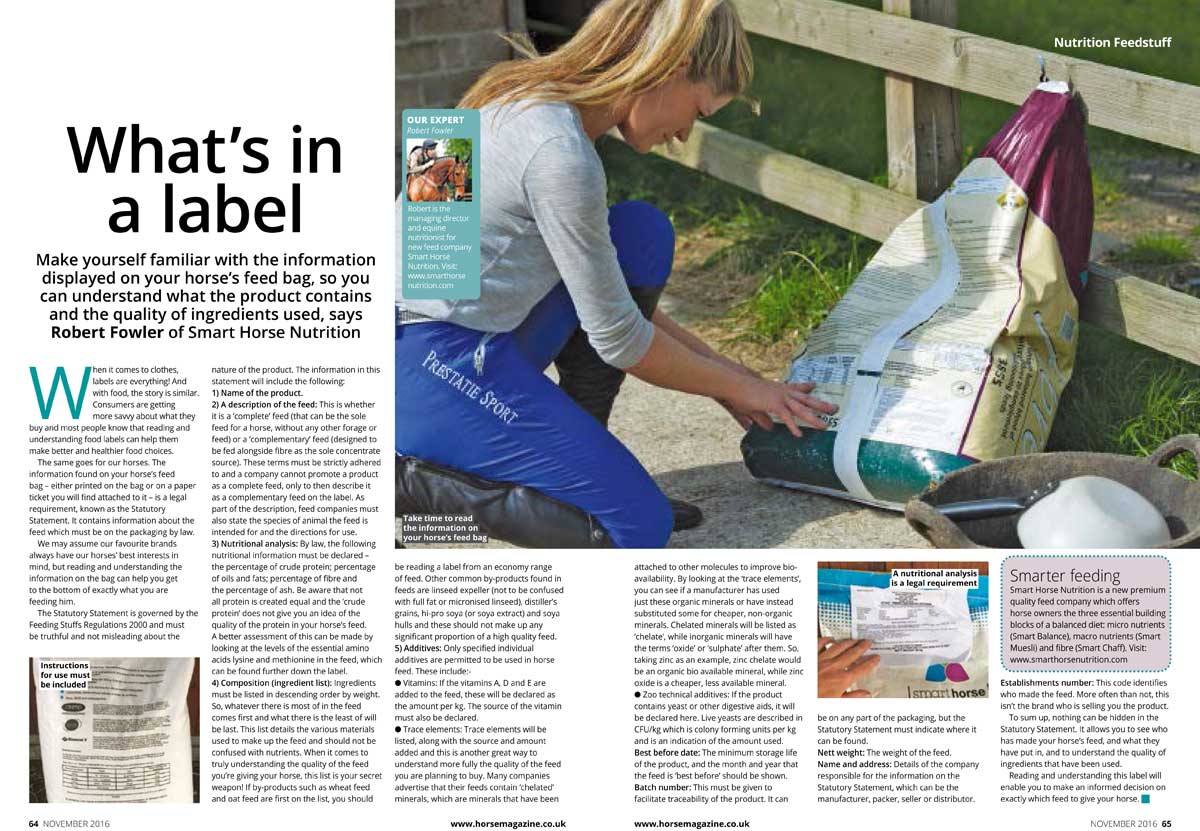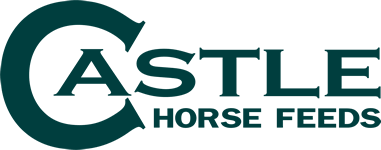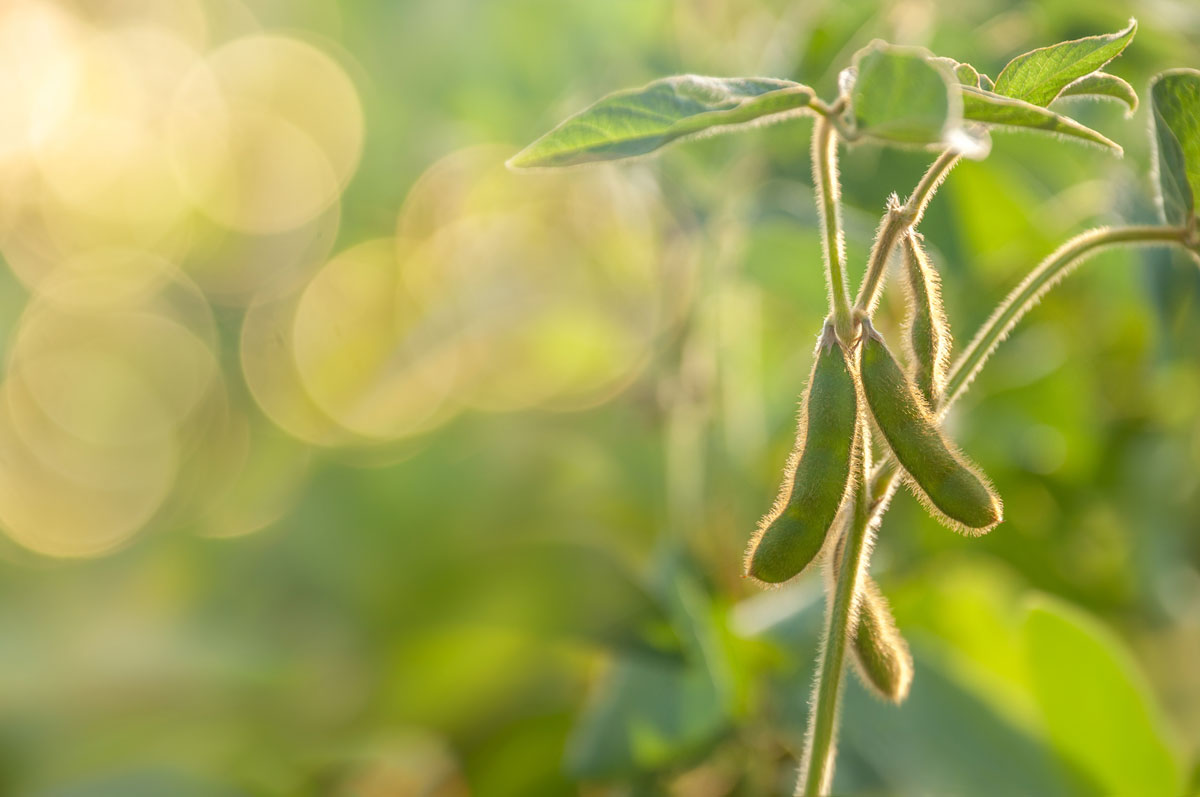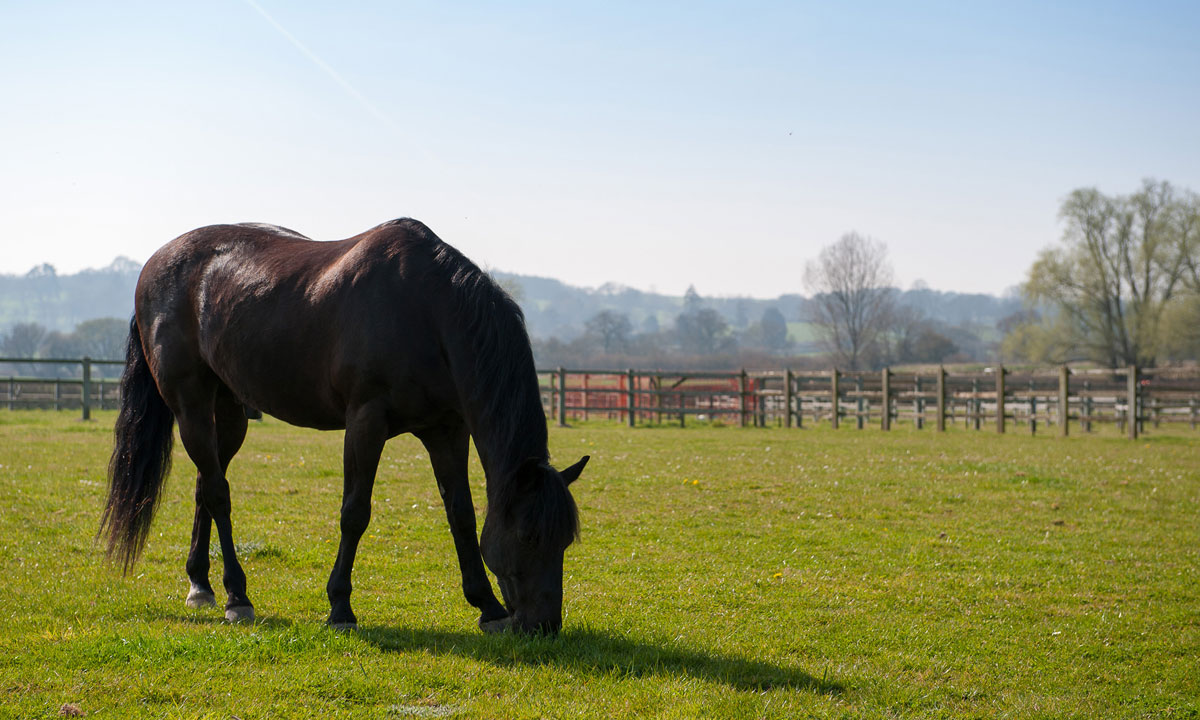
What’s in a label? Understanding and reading the label on your bag of horse feed
When it comes to clothes, labels are everything! And when it comes to food, the story is quite similar. As consumers, we’re getting more and more savvy about what we put in our grocery baskets and while we might like to live in denial about what exactly is in our favourite brand of biscuits, most of us know that learning how to read and understand food labels can help us to make better and healthier food choices. The same goes for our horses. In this post we aim to give you some insights into understanding exactly what is in your horses’ feed.
The label or information that is found on your horse’s feed bags is a legal requirement, known as the Statutory Statement and contains information about the feed which must be on the packaging by law. As horse owners, we may assume that our favourite brands always have our horses’ best interests in mind, but reading and understanding the information on this label can really help cut through the marketing and promotion carried out by feed companies and help you get to the bottom of exactly what you are feeding your horse.
The Statutory Statement is governed by the Feeding Stuffs Regulations 2000 and must be truthful and not misleading about the nature of the product. The information in this statement will include the following:
The name of the feed
A description of the feed – whether it is a “complete” feed – a feed that can be the sole feed fed to your horse without any other forage or feed provided, or a “complementary” feed – which is designed to fed alongside forage as the sole concentrate source. These terms must be strictly adhered to and a company cannot promote a feed as a complete feed only to then describe it as a complementary feed on the label. As part of the description, feed companies must also state the species of animal that the feed is intended to be fed to and the directions for use.
Nutritional Analysis – by law, the following nutritional information must be declared: % Crude Protein, % of Oils and Fats, % of Fibre and % of Ash. It’s important to be aware, however, that not all protein is created equal and the Crude Protein does not give you an idea of the quality of the protein in your horse’s feed. A better assessment of this can be made by looking at the levels of essential amino acids lysine and methionine in the feed, which can be found further down the label.
Composition (Ingredients List) – the ingredients must be listed in descending order by weight, so whatever there is most of in the feed always come first and what there is the least of will come last. This list details the various feed materials used to make up your horse’s feed and should not be confused with nutrients. When it comes to truly understanding the quality of the feed you’re feeding your horse, this list is your secret weapon! If by-products such as wheat feed and oat feed are first on the list, you should be reading a label from an economy range of feed. Other common by-products found in feeds are linseed expeller (which should not be confused with full fat or micronised linseed), distiller’s grains, Hi-pro Soya (or soya extracted) and Soya hulls and these should not make up any significant proportion of a high quality feed.
Additives – Only specified individual additives are permitted to be used in horse feed. These include:
Vitamins – if the vitamins A, D and E are added to the feed, these will be declared as the amount per Kg and the source of the vitamin must also be declared.
Trace Elements – any trace element added will be listed, along with its source and amount added and this is another great way to understand more fully the quality of the feed you are planning to buy. Many feed companies will advertise that their feeds contain Chelated minerals which are minerals that have been attached to other molecules to improve bio-availability. By looking at the Trace Elements, you can see if a manufacturer has used just these organic minerals or have they instead substituted some of the minerals for cheaper non-organic minerals? Chelated minerals will be listed as Chelate, while inorganic minerals will have the terms Oxide or Sulphate after them. So taking Zinc as an example, Zinc Chelate would be an organic bio available mineral, while Zinc Oxide is a cheaper, less available mineral.
Zoo Technical Additives – any yeast or other digestive aids will be declared here. Live yeasts will be described in CFU/Kg which is Colony Forming Units per Kg and is an indication of the amount used.
Best Before Date – is the minimum storage life of the product and the month and year that the feed is best before should be shown.
Batch Number – this must be given to facilitate traceability of the product. It can be on any part of the packaging, but the Statutory Statement must indicate where it can be found.
Nett Weight – must specify weight of the feed.
Name and Address – of the company responsible for the information on the Statutory Statement, which can be the manufacturer, packer, seller or distributor.
Establishments Number – This is a very important code which will identify who actually made the feed. It may surprise you that more often than not, this isn’t actually the brand who is selling you the feed.
So to sum up, nothing can be hidden in the Statutory Statement. It allows you to see not only who has made your horse’s feed, but what they have put in it and to understand the quality of ingredients that have been used. Reading and understanding this label should allow you to cut through all the marketing blurb and make an informed decision on exactly which feed to feed your horse.
As written for and published in HORSE Magazine.




This Post Has 0 Comments